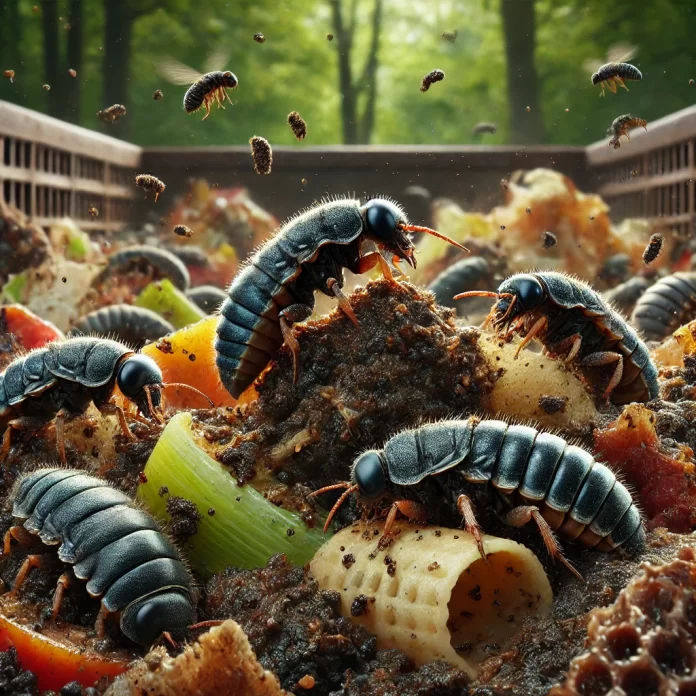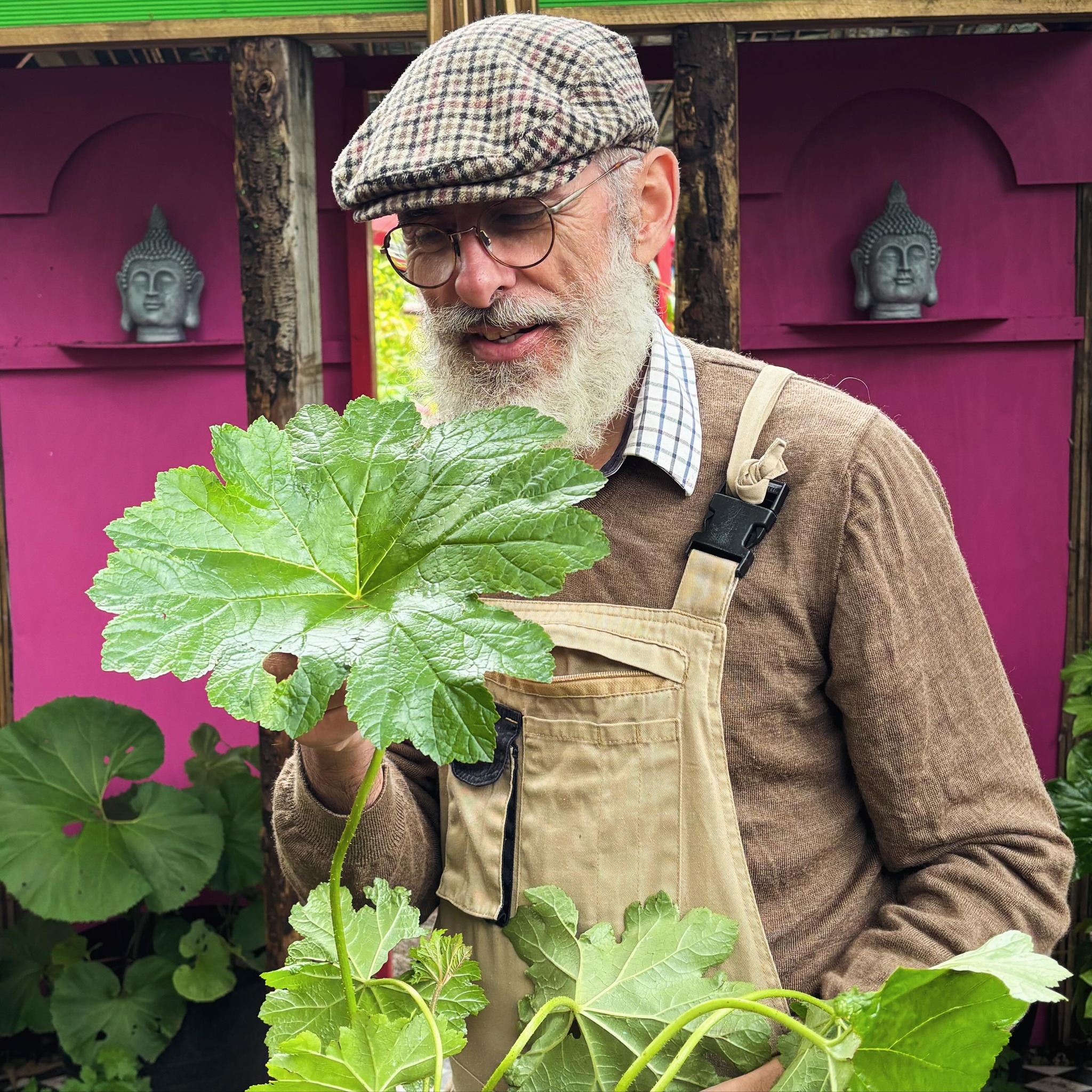What is Soldier Frass? Soldier frass compost is an organic fertilizer made from the excrement (frass) of black soldier fly (Hermetia illucens) larvae. As these larvae consume organic waste, they break it down into a nutrient-rich byproduct that is high in nitrogen, phosphorus, and beneficial microbes.
Benefits of Soldier Frass Compost:
- Rich in Nutrients – Contains essential plant nutrients like nitrogen, phosphorus, potassium, and trace minerals.
- Microbial Boost – Encourages beneficial soil microbes, improving soil health.
- Chitin Content – The frass contains chitin, which can help stimulate plant defenses against pests and diseases.
- Sustainable & Eco-Friendly – Produced as a byproduct of black soldier fly farming, reducing organic waste.
It can be used as a soil amendment, compost booster, or tea for liquid feeding. Since it’s a natural product, it won’t burn plants like synthetic fertilizers.
Frass-based products come from various insect species, each with unique benefits for soil and plant health. Here are some common types:
1. Black Soldier Fly (BSF) Frass
- Byproduct of black soldier fly larvae farming.
- High in nitrogen, phosphorus, and beneficial microbes.
- Contains chitin, which helps plants resist pests and diseases.
- Used as a soil amendment, compost accelerator, or foliar feed.
2. Mealworm Frass
- Derived from mealworm (Tenebrio molitor) farming.
- Rich in nitrogen, potassium, and micronutrients.
- Lower chitin content than BSF frass but still beneficial for soil health.
- Commonly used in vegetable gardens and potted plants.
3. Cricket Frass
- Produced by crickets (Acheta domesticus and other species).
- Contains balanced NPK ratios and beneficial microbes.
- High in chitin, making it useful for pest resistance.
- Often used in organic farming and hydroponic systems.
4. Beetle Frass
- Comes from various beetle larvae, such as darkling beetles.
- Contains decomposed plant matter and insect waste.
- Less commonly available but still beneficial for soil microbes.
5. Locust/Grasshopper Frass
- Less commonly commercialized but rich in organic matter.
- Similar benefits to other insect frass products.
Each type of frass enhances soil fertility, microbial diversity, and plant resilience. They can be used as direct soil amendments, compost activators, or brewed into compost tea.
How Insect Frass Is Made
Insect frass is a byproduct of insect farming, primarily for animal feed, waste management, or protein production. The process typically involves:
- Feeding the Insects – Insects like black soldier fly larvae, mealworms, or crickets are fed organic materials (e.g., food waste, grains, or agricultural byproducts).
- Waste Accumulation – As they eat, the insects excrete frass, which mixes with shed exoskeletons and microbial-rich organic matter.
- Harvesting – Once the insects reach maturity, they are separated from their frass using sieves or mechanical separators.
- Drying & Processing – The frass is dried to reduce moisture and prevent mold, then it may be pelletized or sold as loose granules.
- Packaging & Distribution – The final product is bagged and sold as an organic fertilizer or soil amendment.
How Much Do You Need?
The recommended application rate depends on the plant type and soil condition:
- General Soil Amendment – 0.5 to 2 kg per 10m² (5 to 20g per plant).
- Potting Mix – 5-10% of the total mix by volume.
- Top Dressing – Lightly sprinkle around the base of plants every 4–6 weeks.
- Compost Tea – Mix 100g per 10L of water, let it steep for 24 hours, then use as a foliar spray or root drench.
How to Use It
- Mix into soil before planting to enhance nutrient availability.
- Top-dress around established plants for a slow nutrient release.
- Brew into a compost tea to activate soil microbes and promote plant immunity.
- Blend with compost to boost microbial activity and nutrient cycling.
Since frass contains chitin, it also acts as a biostimulant, helping plants develop stronger immune responses against pests and diseases.
How Chitin Works in Soil & Plant Health
Chitin is a natural biopolymer found in insect exoskeletons, fungal cell walls, and crustacean shells. When introduced into the soil through insect frass, it has several beneficial effects:
1. Stimulates Beneficial Microbes
- Chitin is broken down by chitin-degrading bacteria and fungi (e.g., Bacillus, Streptomyces, Trichoderma).
- These microbes release chitinase enzymes, which help decompose chitin into bioavailable nutrients.
- The breakdown process enriches the soil with nitrogen and carbon.
2. Induces Plant Immune Response
- Plants detect chitin fragments (chitooligosaccharides) as signals of potential insect or fungal attacks.
- This triggers a Systemic Acquired Resistance (SAR) or Induced Systemic Resistance (ISR), strengthening plant defenses.
- The plant produces defensive compounds (like phenolics and peroxidases), making it harder for pests and pathogens to establish.
3. Suppresses Root Pathogens
- Chitin-fed microbes outcompete harmful pathogens like Pythium, Rhizoctonia, and Fusarium.
- Some chitin-degrading fungi, like Trichoderma, act as biocontrol agents against soilborne diseases.
4. Improves Soil Structure
- Chitin-rich amendments increase soil organic matter.
- Microbial activity from chitin decomposition helps bind soil particles, improving aeration and water retention.
5. Boosts Nutrient Cycling
- The breakdown of chitin releases nitrogen (in the form of ammonium) and other micronutrients.
- This makes nutrients more available to plants while promoting healthy root development.
Practical Applications
- Insect Frass – A natural way to introduce chitin into the soil.
- Crustacean Meal (Shrimp or Crab Shells) – Used as a slow-release chitin source.
- Chitin-Based Biostimulants – Liquid formulations used as foliar sprays or root drenches.
Effectiveness in the Garden
Using insect frass or chitin-rich amendments regularly can reduce pest pressure, improve soil health, and promote stronger plant growth without synthetic pesticides or fertilizers.




